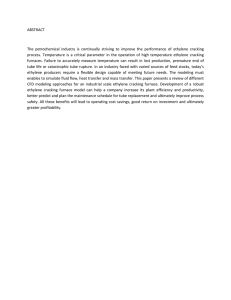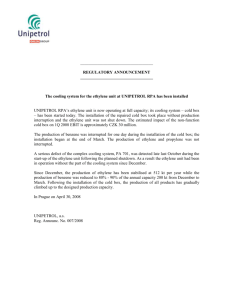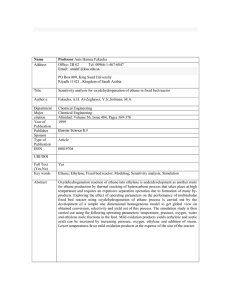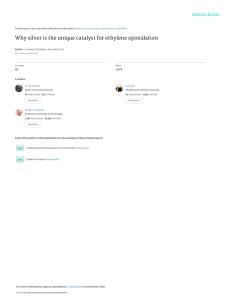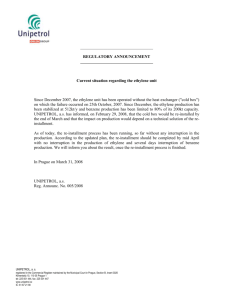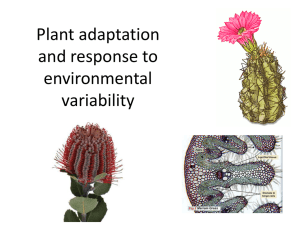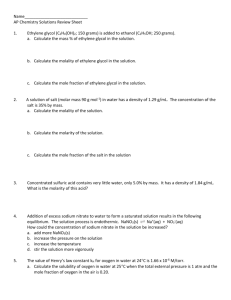Supplemental Information
advertisement
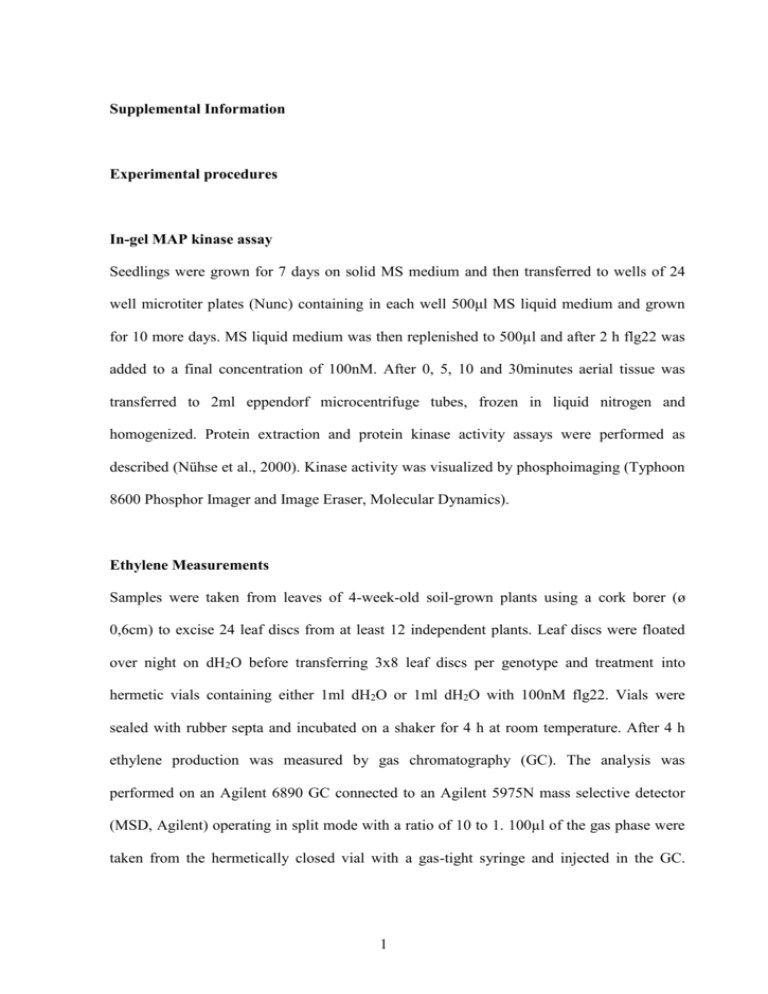
Supplemental Information Experimental procedures In-gel MAP kinase assay Seedlings were grown for 7 days on solid MS medium and then transferred to wells of 24 well microtiter plates (Nunc) containing in each well 500μl MS liquid medium and grown for 10 more days. MS liquid medium was then replenished to 500µl and after 2 h flg22 was added to a final concentration of 100nM. After 0, 5, 10 and 30minutes aerial tissue was transferred to 2ml eppendorf microcentrifuge tubes, frozen in liquid nitrogen and homogenized. Protein extraction and protein kinase activity assays were performed as described (Nühse et al., 2000). Kinase activity was visualized by phosphoimaging (Typhoon 8600 Phosphor Imager and Image Eraser, Molecular Dynamics). Ethylene Measurements Samples were taken from leaves of 4-week-old soil-grown plants using a cork borer (ø 0,6cm) to excise 24 leaf discs from at least 12 independent plants. Leaf discs were floated over night on dH2O before transferring 3x8 leaf discs per genotype and treatment into hermetic vials containing either 1ml dH2O or 1ml dH2O with 100nM flg22. Vials were sealed with rubber septa and incubated on a shaker for 4 h at room temperature. After 4 h ethylene production was measured by gas chromatography (GC). The analysis was performed on an Agilent 6890 GC connected to an Agilent 5975N mass selective detector (MSD, Agilent) operating in split mode with a ratio of 10 to 1. 100µl of the gas phase were taken from the hermetically closed vial with a gas-tight syringe and injected in the GC. 1 Ethylene was separated on an Agilent GS-GasPro column (60m, ø 0,32mm) at 90°C and 1.4ml/min. The MSD was run in the ”selected ion monitoring” (SIM) mode, measuring Ethylene fragment ions of 24,1; 25,1; 26,1 and 27,1 amu. Additional to the fragment masses, identification of the ethylene peak was based on the retention time of an ethylene standard (Fluka, Deisenhofen, Germany) run under same conditions and the ratio of ion abundances. To quantify ethylene, the area sum of all four ion counts was integrated using Chemstation software (Agilent). For more precise analysis, integrals of the void volume and the ethylene peaks were calculated and their ratio to each other was determined. For each genotype and treatment, average was calculated from three replicates. The obtained value was then used to express relative ethylene quantities in the different samples. 2
